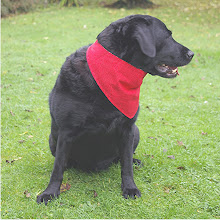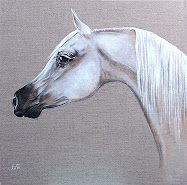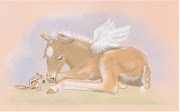Global warming is here, and is really happening, please take time to read this post and take a look at the links and video about Polar Bears.....
http://wwf.worldwildlife.org/site/R?i=fqRiehXebWRYv3ykARn-1Q..
There are many endangered species on Earth and we all know that we are using up Earth's resources too quickly. We are consumers and polluters and that leads to climate change and loss of animal and plant habitat. Just how do we know what is endangered? The World Conservation Union published this list in July 2006: Categories: Extinct in the Wild ~ known only to survive in cultivation or in captivity. * Hawaiian Cotton Tree - 23 plants in cultivation world wide * Lonesome George - last known survivor of the Pinta Island species of Galapagos giant tortoise; a worldwide search has failed to find a mate for George of his own species. * Scimitar-Horned Oryx (an Antelope) - 450 reintroduced to protected parks in Africa; 2000-3000 in zoo captivity Critically Endangered ~ considered to be facing an extremely high risk of extinction in the wild. * Amur Leopard - 35 left in the wild (Russian Far East, North Korean & Chinese borders) * Azraq Killifish - a few thousand left in eastern Jordan * Black Rhino - 3600 left - the fastest disappearing large mammal in the world * common Skate (stingray) - about 500 left in north-east Atlantic * Delhi Sands Flower-Loving Fly - only 2-3% of habitat left in southern California dunes * Grand Cayman Blue Iquana - 10-25 in 2002; 120 young have been placed into protected areas * Grey Nurse Shark - less than 500 on the east coast of Australia * Gurney's Pitta (SE Asian bird) - 50-100 left in the rainforest * Kipunji (African monkey) - less than 100 in East Africa * Leatherback Turtle - 26,00-40,000 on tropical beaches * Mediterranean Monk Seal - 400-500 left in Greece, Turkey and Spain * Land Snail species "Powelliaphanta Augustus" - 500 left in New Zealand * Pygmy Hog - 500 left in northeast India * Scottish Wildcat - 400 left in the Scottish highlands; only captive breeding may save it. * Seychelles Sheath-tailed Bat - 30-100 left * Siberian Crane - 2500-3000 left in Siberia and Iran. * South China Tiger - 10-30 left in the wild; 60 more in China zoos. * Sumatran Rhino - 300 in Malaysia and Borneo; the world's rarest large mammal. * Telmatobius Gigas (South American frog) - unknown; found only in the Andes region of South America. * Trinidad Piping Guan (pheasant) - less than 200 left. * Tsodilo Daisy - only a few plants left in Botswana; seeds have been harvested and stored for conservation. * White-backed Vulture - few thousand left in South Asia; declined by 97% in the past 15 years. Endangered ~ facing a very high risk of extinction in the wild. * African Wild Dog - 3,000 - 5,000 left in the wild * Asian Elephant - 35,000-50,000 left in the wild (10-15% of the African elephant population) * Bengal Tiger - 3000-4500 left in the Bengal India jungles * Black-browed Albatross - 618,153 pairs left (399,416 pairs in the Falkland islands) * Bowhead Whale - 8,000 left in eastern Canada; a few hundred in eastern Russia * Cheetah - 3,000 in the wild; protected in Nambia (12,000 there); 100-200 in Iran * Chimpanzee - population has declined by 2/3 in last 30 years * Drill (African primate) - 3000 baboons left in Nigeria * Eastern Lowland Gorilla - 2000-3000 left in the Congo * Ethiopian Wolf - 500 left in Ethiopia * Giant Panda - 1600 left in SW China; a natural carnivore that has adapted to a vegetarian diet to survive * Golden Conure (Parrot) - 2500 in the wild in Brazil; 1500 in captivity * Gouldian Finch - less than 2500 adult birds in the savannas of northern Australia * The Great Barrier Reef - largest tropical reef system in the world - visible from space; home or nursery to one quarter of the known species of marine fish; in danger from agriculture and development despite protected status. * Green Sea Turtle - 88,000 adult females worldwide * Grevy's Zebra - 2000 left in Kenya; 150-250 in Ethiopia * Hemiphlebia Dameselfly - unknown * Jocotoco antpitta (bird) - 50 left in the Andes * Mangrove finch - 40-50 pairs in the Galapagos islands * Northern Right Whale - 300 left * Bornean Orangutan - 50,000-60,000 left in rainforest, including critically endangered Sumatran orangutan. * Philipine Eagle Owl - 3-4 at several sites in the Sierra Madre mountains * Piping Plover (shore bird) - 6,000 adults worldwide; 500 in Canadian Atlantic * The Rainforest - once covered 14% of Earth's land surface - now less than 6%; produces 40% of Earth's oxygen and neutralizes air pollution; an area equal to 50 football fields is lost every minute. * Red Ruffed Lemur - 15,000 left in the forests of Madagascar * Snow Leopard - 3800-6000 left in the mountains of central Asia and the Himalayas; more rare than tigers. * Sonoran Pronghorn - 500 left in American Southwest and Mexico; less than 30 of those are in the US. * Spiny Seahorse - unknown; found in the European waters of Britain but very rare. * Tadpole Shrimp - unknown; species so old that it is known as a 'living fossil'. * Tasmanian Wedge-tailed Eagle - less than 1500 birds left in Australia; less than 500 breeding pairs; large enough to hunt kangaroos. * Yellow-eyed Penquin - 430 pairs in New Zealand (up from 190 pairs in 1990). Vulnerable ~ facing a very high risk of extinction in the wild. * African Elephant - 440,000 - 660,000 left in the wild * African Lion - 23,000 - 39,000 - endangered in 10 countries with a population of less than 200 Near Threatened ~ will qualify for one of the above in the near future. Least Concern ~ widespread and abundant, but may be regionally threatened. So those are some details to get you started on next month's theme. You may have even more information than I've covered here! AND - did you know that the World Land Trust (WLT) has a program to buy an acre (or half-acre) of rainforest? I don't pretend to know all the politics of this organization and what they do, but I would like to propose that we consider saving some rainforest
http://www.worldlandtrust.org/supporting/donation.htm The price of an acre is $100 US £50UK and the minimum purchase is $50 ,£25 for half an acre. Please log on & read, Richard Attenborough Pleads their case,...














































